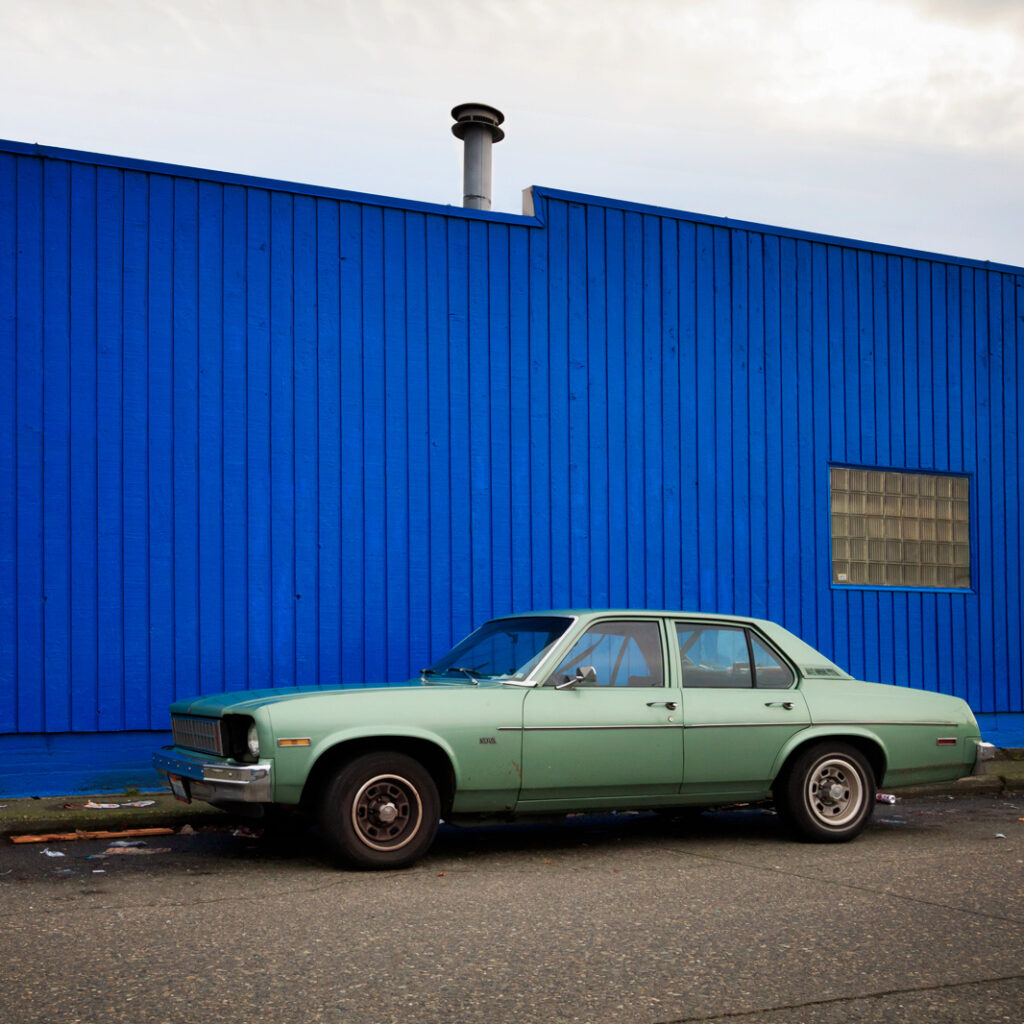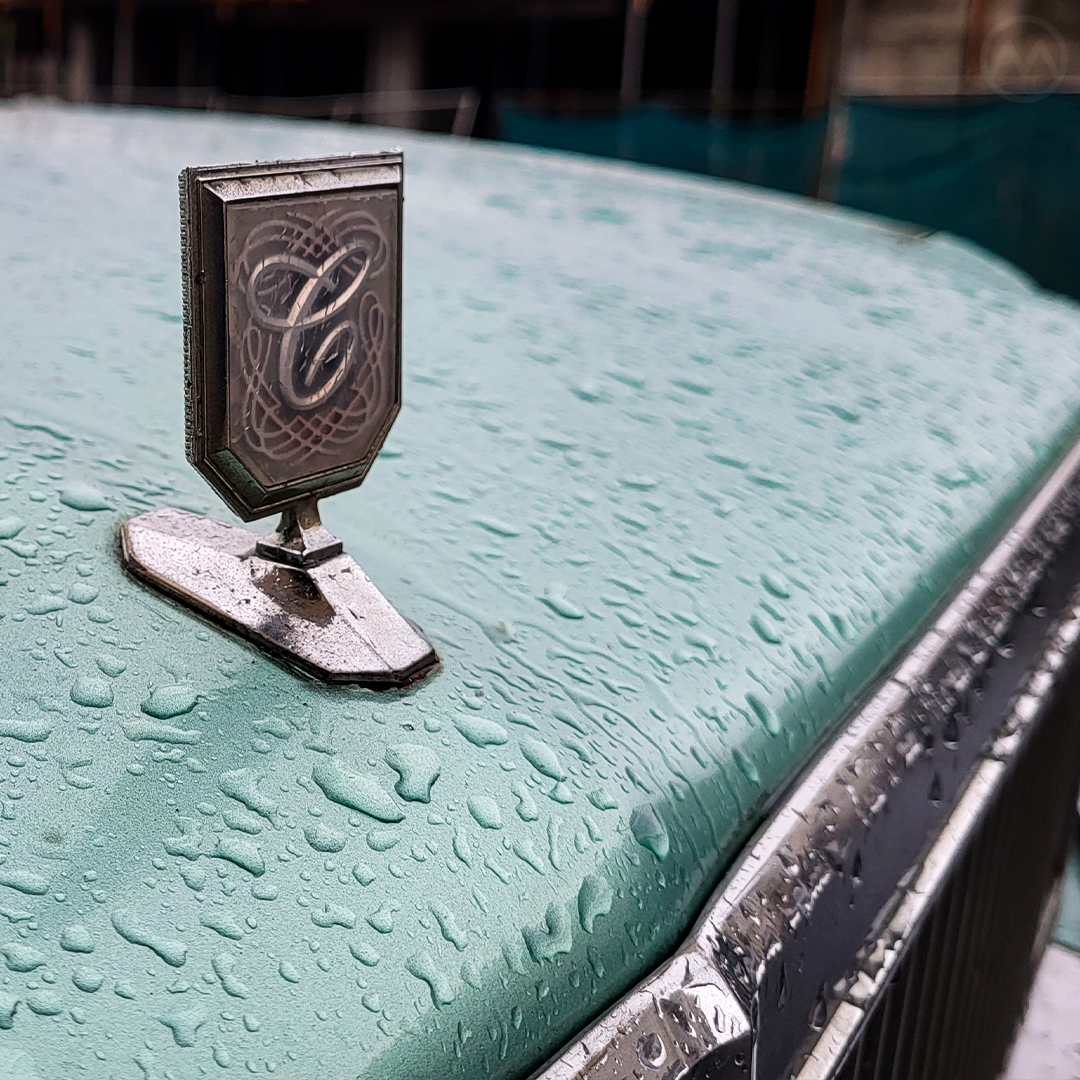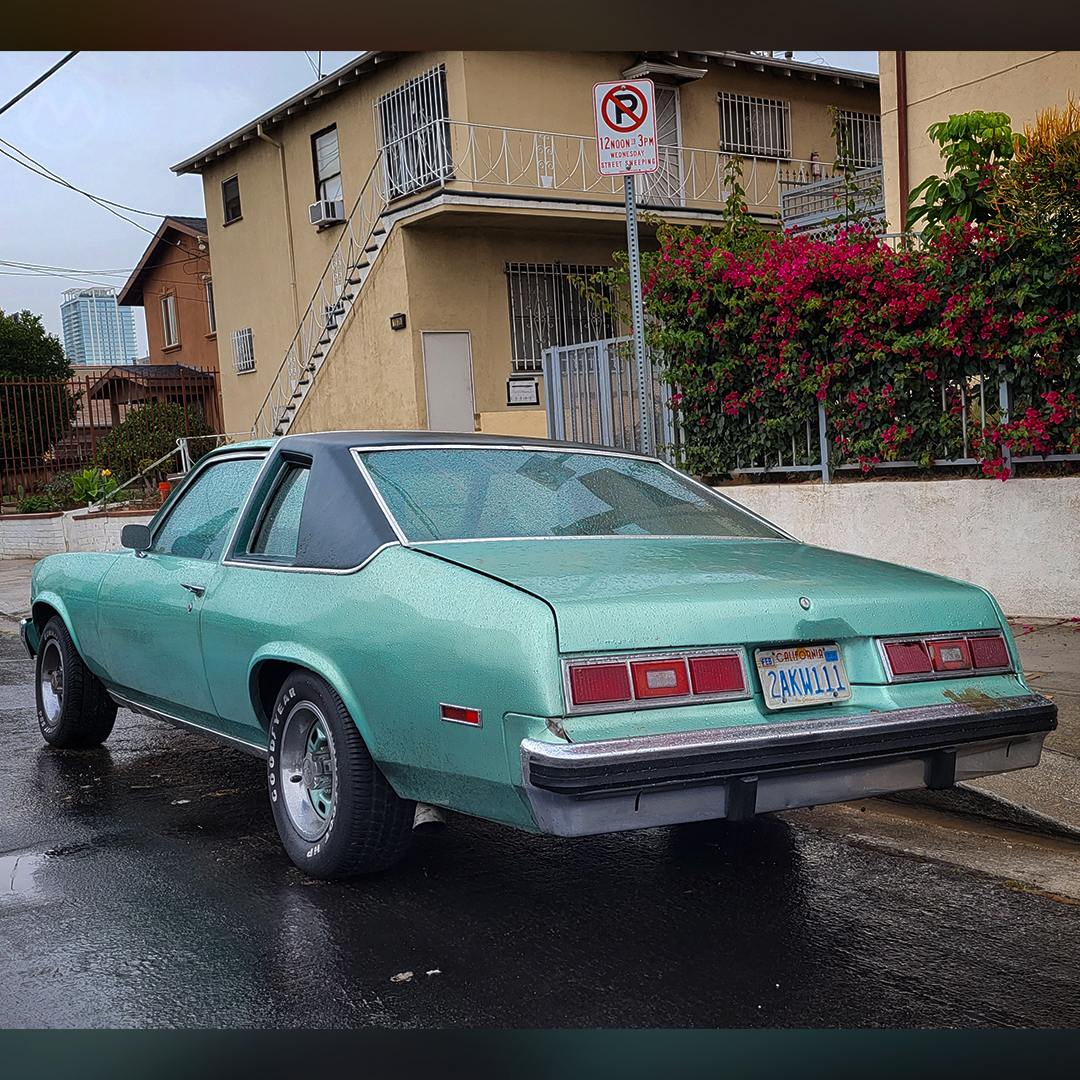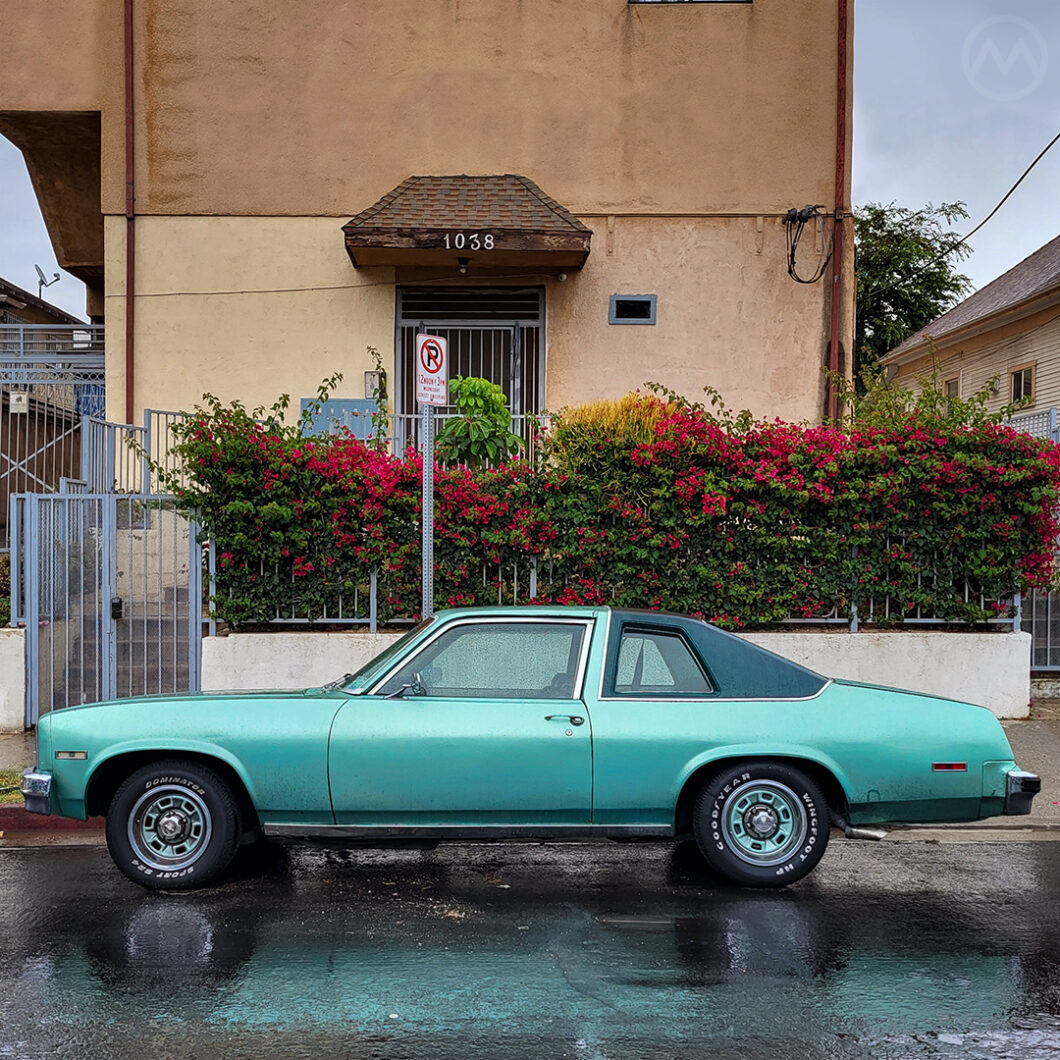Some cars seem to be everywhere—road furniture—until suddenly you notice their absence. Once as common as RAV4s are today, it’s been a while since the fourth-gen (1975-79) Chevy Nova suddenly became rare, but in rust-free places you still see them bombing around. And so it was that we spotted this one on a walk in Koreatown, Los Angeles, in 2023. But this isn’t an ordinary Nova, it’s the extra-fancy kind: a 1977 Nova Concours.
Though late 1970s Novas had their flaws, with build quality typical of that time and an unhappy tendency for rear leaf springs to crack when they were severely worn, they were solid, generally reliable cars that offered quite a few improvements over the previous cars. Before fans of 396-powered 1970 Novas get upset, none of those improvements involved straight-line speed, but the redesign improved what was already a good package.
Much of the 4th-gen Nova was carried over from its predecessor, which meant good handling (with a front suspension and subframe borrowed from the Camaro), but now there were standard front disc brakes, electronic ignition, and, soon, radial tires. While nowhere near as quick as the factory hot rod Novas of the late 1960s and early 1970s, these later versions were better drivers for normal folks, and they sold very well at first.

Luxury Novas and the Nova Concours
But most Novas, like the wrecked one owned by George McFly seen at the beginning of “Back to the Future,” were workaday cars designed to be cheap transportation. In the era of the Brougham, Chevy’s product planners decided that in addition to the sportier Nova SS (which continued as an option in 1975 and 1976), there should also be a more luxurious one. This recipe worked very well for Oldsmobile, and indeed the proliferation of X-body spinoffs in 1973 (notably before OPEC) proved that there was a market for fancier versions of these cars.
Chevy’s first take on this idea was the 1975 “Nova LN,” meaning “Luxury Nova.” It had plusher seats, body-color wheel covers, nicer interior materials, and special badging, all of which added up to about a $700 premium over a standard Nova. Not enough to make the car “too expensive,” but enough to put it on pretty much even footing with the fancier Olds (F-85/Omega) and Pontiac (Ventura/Phoenix) versions of the same basic vehicle.
Buyers didn’t take much note of the LN, but it was still a good idea, and with the brougham-tastic (U.S.) Ford Granada and Mercury Monarch flying off lots in 1975, the Bowtie brand turned up the volume for 1976, morphing the LN into the “Nova Concours.” The Concours would get its very own brochure as the “Chevrolet Concours” in 1977, but it was always truly just the top-tier Nova.

All of the Many Novas
Concours models kept the LN’s fancier interior appointments (like “rosewood grain vinyl”) but added even more color combos and fake wood trim, and on coupes you could get white interiors with white vinyl seats. Though impossible to keep clean long term, the white interiors looked a lot like fancier white leather Cadillac cabins and they were really nice at night. There were also bright wheel arch moldings and a fancy hood ornament with a stylized “C” (we’ll post a picture in the comments). The package would not seem all that “luxurious” today, but it did at the time in comparison to the regular Novas.
It wasn’t a terrible seller (1 in 5 ‘77 Novas was a Concours), but since you could easily buy a more gilded and distinctive X-body from Buick (Skylark), Olds (Omega), or Pontiac (Ventura/Phoenix) for similar money (about $550 more than a regular Nova), the Concours never really took off. When the downsized Malibu arrived in late 1977, the Concours was dropped and replaced with the “Nova Custom” trim, just as the SS had been replaced by the “Rallye” package.
Though slow compared to what went before, all of these Novas offered three solid engine choices. The long-serving base 250-cid (4.0-liter, at this time U.S. manufacturers were switching over from cubes to liters, so we’ll do both here) straight six was complimented by the 262 (4.3, 1975 only), 305 (5.0), and 350 (5.7) V8s. Later on, Chevy added the “Iron Duke” 151-cid (2.5) four and Buick’s 231 (3.8) V6. This generation of Nova, however, was always been squeezed between other cars.
As with the final years of the previous Nova, the presence of Buick (Apollo/Skylark), Olds, and Pontiac versions blunted sales of the original. But these cars were also seen as a little old-fashioned when they were new, a perception that got worse as time went on.

The downsizing of the midsize A-body cars in 1978 meant that the formerly large Malibu was now about the same size and weight as the Nova; in fact the downsized A-body Malibu was lighter than the physically smaller Nova, but had more room inside and came as a wagon. With two similarly-sized cars sat in the same showroom, sales took a bit hit even though the Nova had a pricing advantage in both MSRP and the deals you could get, since dealers sometimes discounted them.
Sales trailed off even further in 1979, the rear-drive cars’ foreshortened final year, with production ending in March of ’79. Of course, GM had ended production early to make way for what were then some of the most anticipated American cars ever, the front-wheel drive X-cars, which came online in the summer of 1979.
We don’t always have the “good camera” handy, and the weather doesn’t always cooperate, but sometimes you see something so interesting that sharing a cellphone pic is worth it. So it was with this Koreatown Concours, seen in pouring L.A. rain while taking a break from pre-L.A. Auto Show work. It’s a ‘77, and some 28,602 of these Concours coupes were built that year. The hatchback was far rarer, at 5,481 builds.

